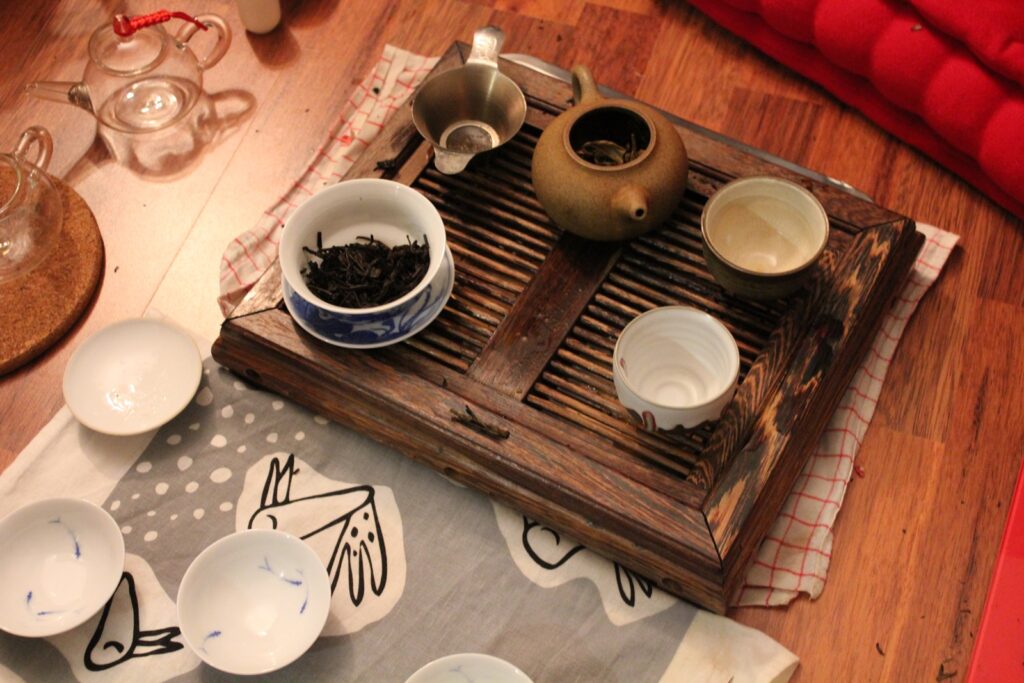Oolong is my favourite type of tea. From dark oolongs to green oolongs, it’s immensely generous in its variety of colour, shape, aroma and taste. You can never get bored with oolong tea! Along the way, I’ve tried lots of different oolongs, but never in a systematic way. So I was super excited to see ‘A Deep Dive into Oolongs’ series at my favourite local teahouse here in Helsinki, TeeMaa, run by Peng and Xinyuan. The first tasting session is all about Phoenix Dan Cong Oolong.
Each workshop introduces 5-7 different types of Oolong tea based on regionality, including its history, processing, cultivars, brewing and tea tasting:
- Workshop #1: Phoenix Dan Cong Oolong from Guangdong, China (2.8.20)
- Workshop #2: Oolong Teas from Taiwan (9.8.20)
- Workshop #3: Cliff Oolong from Wuyi, Fujian, China (16.8.20)
This blog post is about Workshop #1: Phoenix Dan Cong Oolong from Guangdong, China.

Regionality of Oolong tea
At the first workshop last Sunday, we started off with a brief overview of Oolong teas particularly relating to their regionality and styles. There are 4 main Oolong producing regions, each producing different styles and variants.

- Wu Yi, Northern Fujian, China: MinBei Oolong or Wu Yi Yan Cha (Cliff Tea), for example Da Hong Pao, Shui Xian.
- Anxi, Southern Fujian, China: MinNan Oolong, such as Tie Guan Yin.
- Chao An County, Guangdong, China: Feng Huang (Phoenix) Dan Cong, for example Huang Zhi Xiang, Ya Shi Xiang.
- Taiwan: A wide variety of styles, including Gao Shan, Si Ji Chun.
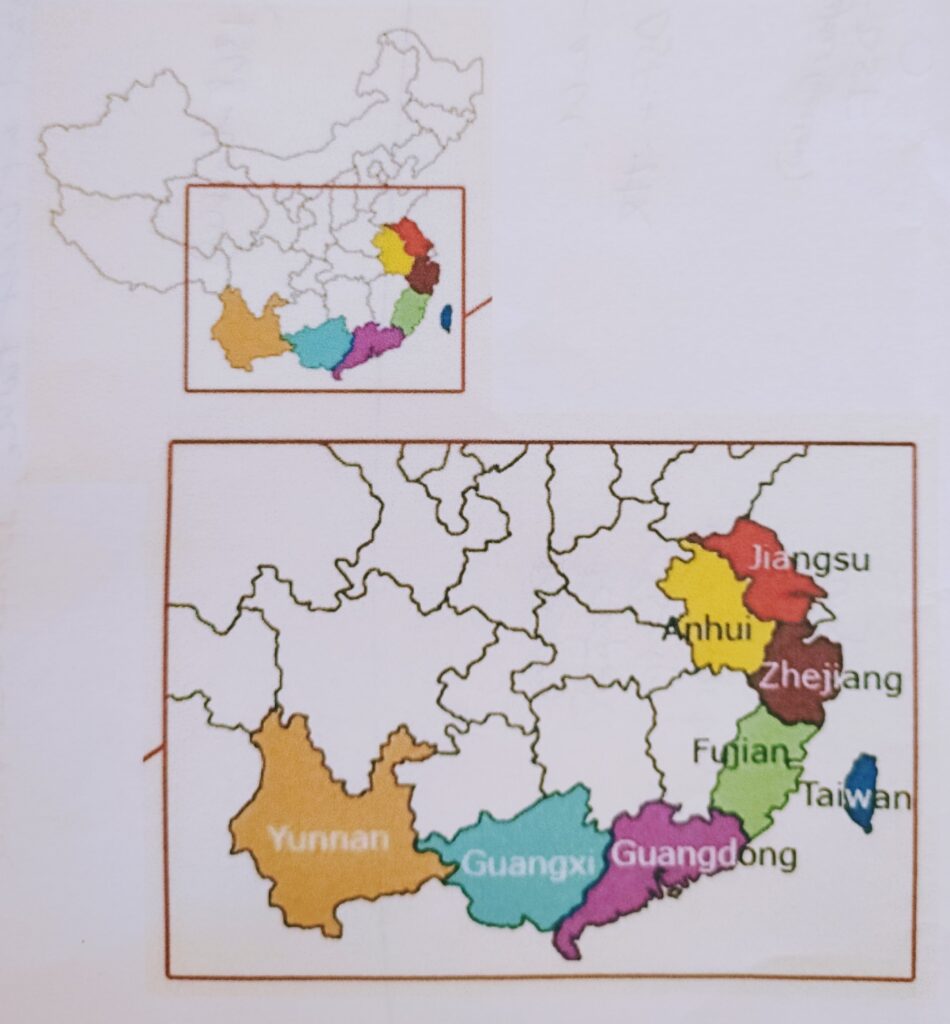
I love how humble TeeMaa is, explaining that the only tea they have from An Xi is a Tie Guan Yin. Hence the exclusion of this region from the workshop series. If you want to know more about An Xi and Tie Guan Yin, head over to my blog posts: Weekend Trip to Anxi, Fujian – Days 1 & 2 and Weekend Trip to Anxi, Fujian – Day 3
Phoenix Dan Cong oolong overview
As a backdrop to the tea tasting, Peng told us a little about the history, categorisation and processing of Phoenix (Feng Huang) Dan Cong. Phoenix Dan Cong Oolong is produced in Chaozhou, Guangdong province. Dan Cong means “single tree” meaning that each kind of Phoenix Dan Cong is made from the leaves of the same tree. Phoenix refers to the Phoenix Mountain (Feng Huang Shan), where tea trees grow at an altitude of around 1,000 meters.

The oldest tree in the area is estimated to be 700 years old, so Phoenix Dan Cong is widely considered to be the ancestor of all Oolongs. Hong Yin, one of the teas that we are tasting, is picked from wild trees and closest to the original. It was during the Ming Dynasty (1368-1644) when tea production started to shift from wild foraging to an agricultural system.
The Oolong processing method is one of the most complex. The main stages are Plucking, Withering, Rolling/Shaking, Oxidising, Fixing and Drying/Roasting. Oolongs can be oxidised at anywhere between 20% and 80%. Phoenix Dan Congs are generally oxidised at between 50%-80%. The roasting process develops the tea’s aroma and flavours, and can differ depending on each farmer. All Phoenix Dan Congs are roasted at least once, generally for about 3 hours. They can also go through a shorter second and third roasting, which takes place after the tea has rested for a few weeks.
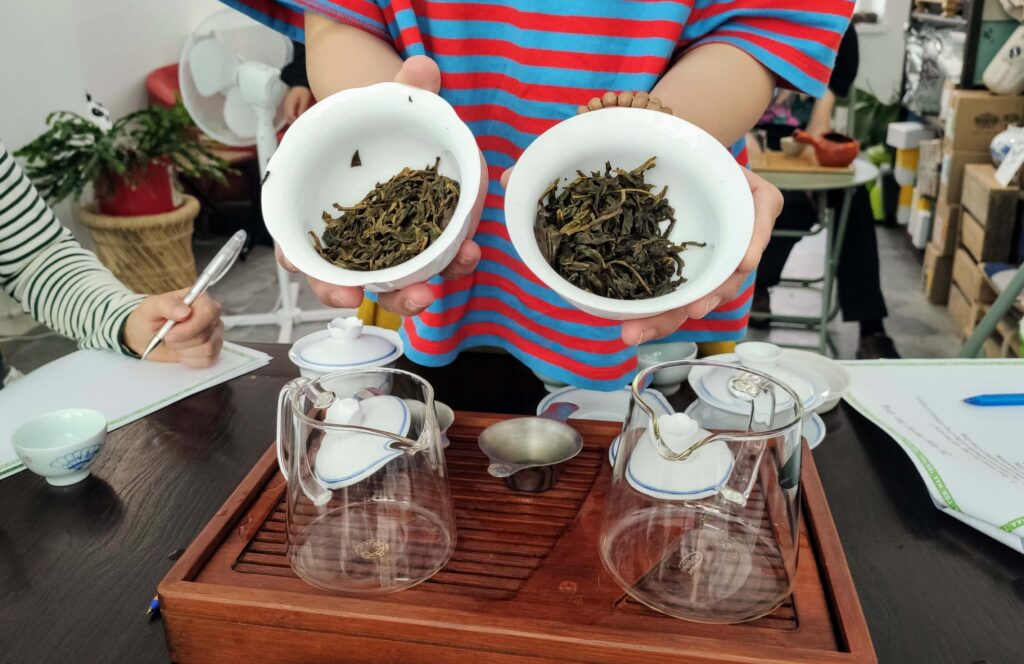
In the 1960s, tea researchers visited the region to study differences in tea plants and trees in each particular area. Phoenix Dan Cong Oolongs were then categorised and named according to their aroma. They came up with 3 main categories:
- Flowery – further subdivided into Floral and Honey (Mi Lan)
- Fruity – eg. plum, apple, and also including sweet potato
- Medicinal – aromas reminiscent of Chinese Medicine, such as almond
Phoenix Dan Cong Oolong Tea Tasting
Ya Shi Xiang (Duck Shit Fragrance)
Don’t let the name put you off, it’s actually a beautiful tea! Why such a name? Well, the story goes that the farmer spread lies that the tea was nothing special, naming it Duck Shit, in an attempt to stop others from stealing it!

I really like Duck Shit Fragrance, and was keen to compare it alongside other Phoenix Dan Congs. A light and floral aroma, gives way to quite a bold floral flavour combined with sweet honey notes. It feels lovely and smooth on the first and second brews. By the third brew it starts to become a little astringent, losing the aroma and flavour.
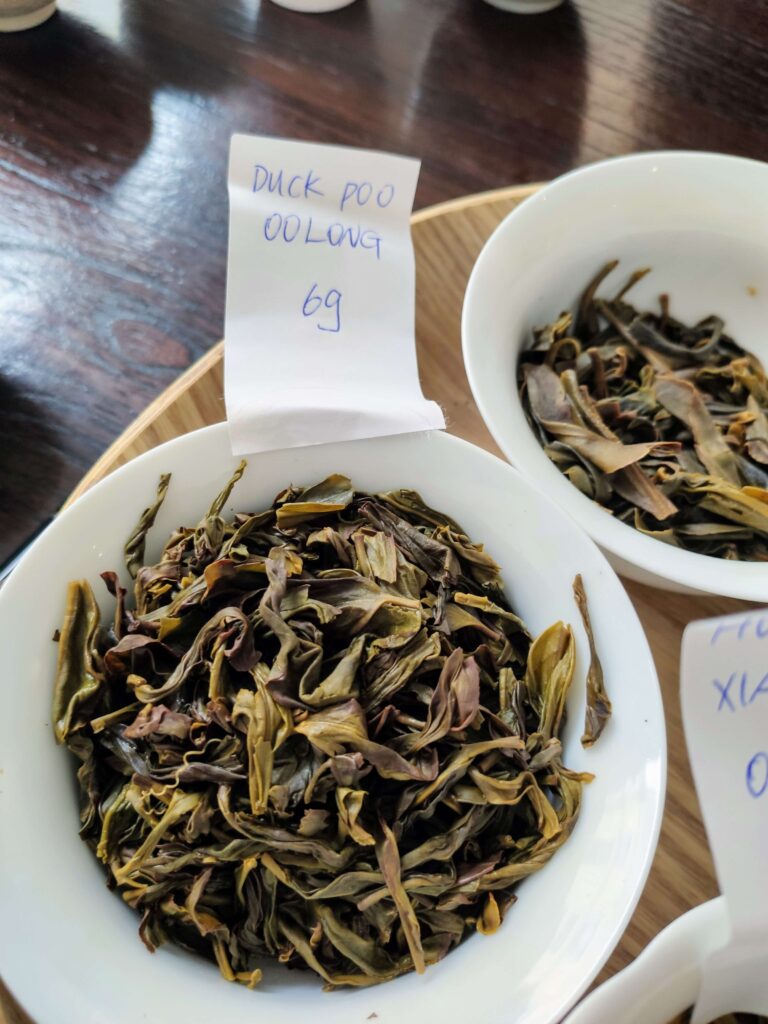
Huang Zhi Xiang (Yellow Gardenia Fragrance)
We tasted Duck Shit Fragrance and Huang Zhi Xiang together to compare 2 ‘Flowery’ category teas. In comparison, Huang Zhi Xiang was noticeably stronger on the aroma and more delicate in flavour.
I love the beautiful creamy and floral gardenia aroma. And though more delicate in flavour, it’s sweeter than Duck Shit Fragrance, floral and honey-like. The 3rd brew still gives a lovely aroma and flavour, with some astringency coming through. A really pleasant long aftertaste, too. This may be my new favourite!
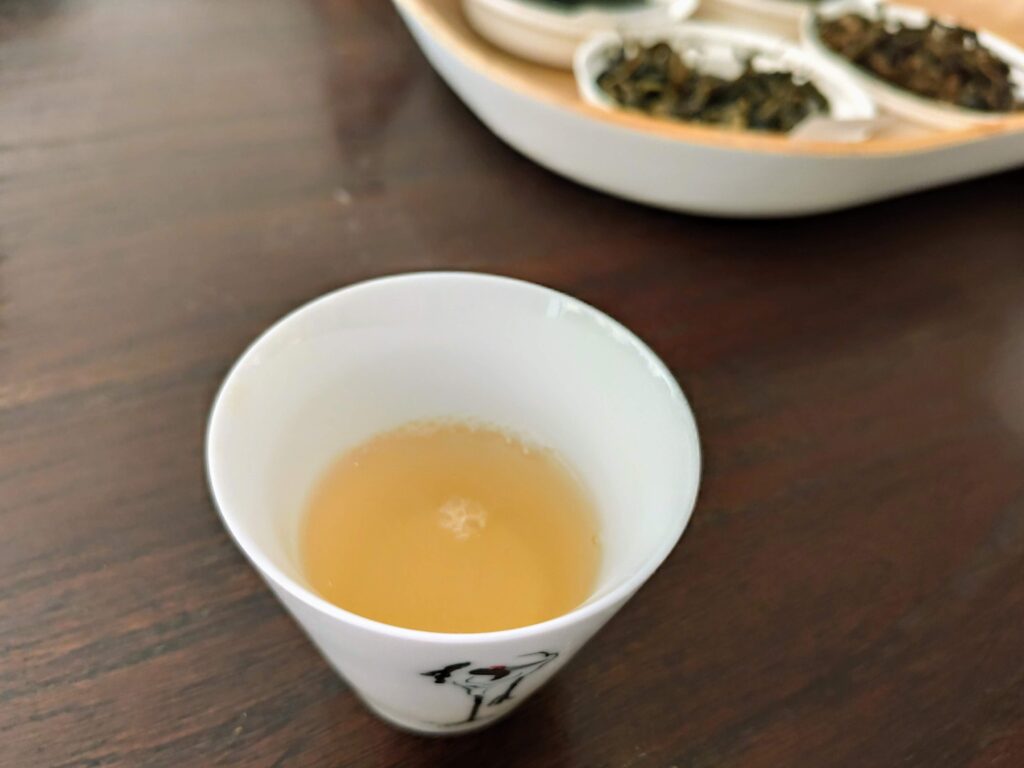

Mi Lan Xiang (Honey Orchid Fragrance)
Mi Lan Xiang is perhaps the most well known Phoenix Dan Cong, and is the most familiar to me. I’ve been brewing this up at home for the past few months.
As the name suggests it has a lovely sweet honey orchid aroma and taste which lasts really well through all 3 brewings. The wet leaves give a lovely roasted smell. It’s sweet and delicate with a smooth long lasting aftertaste. Perfect for sipping on all day.

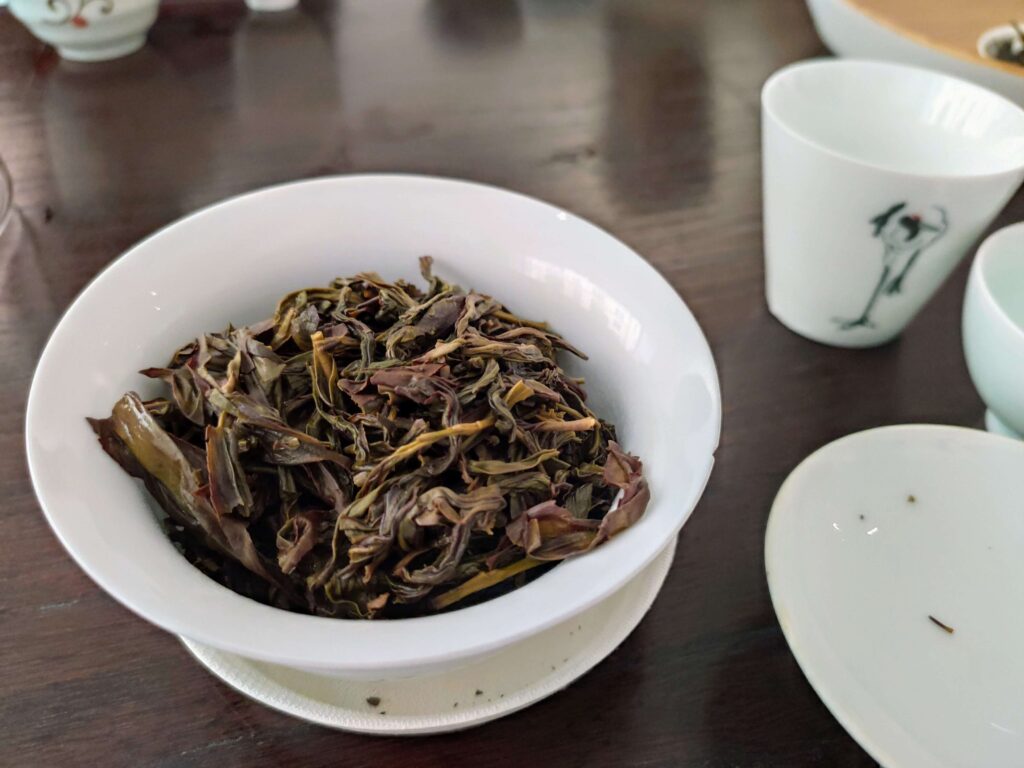
Shan Gan Aged Oolong (Mountain Sweetness)
Shan Gan Aged Oolong has been aged for more than 10 years, and was the most surprising and interesting out of all the teas we tasted. It’s so different from the others, and could fall into either the ‘Fruity’ or ‘Medicinal’ category. The wet leaves immediately give off a heady pungent smell of plum. And the flavour has allsorts going on. Juicy plum compote with hints of liquorice root, smoke and a touch of sourness.
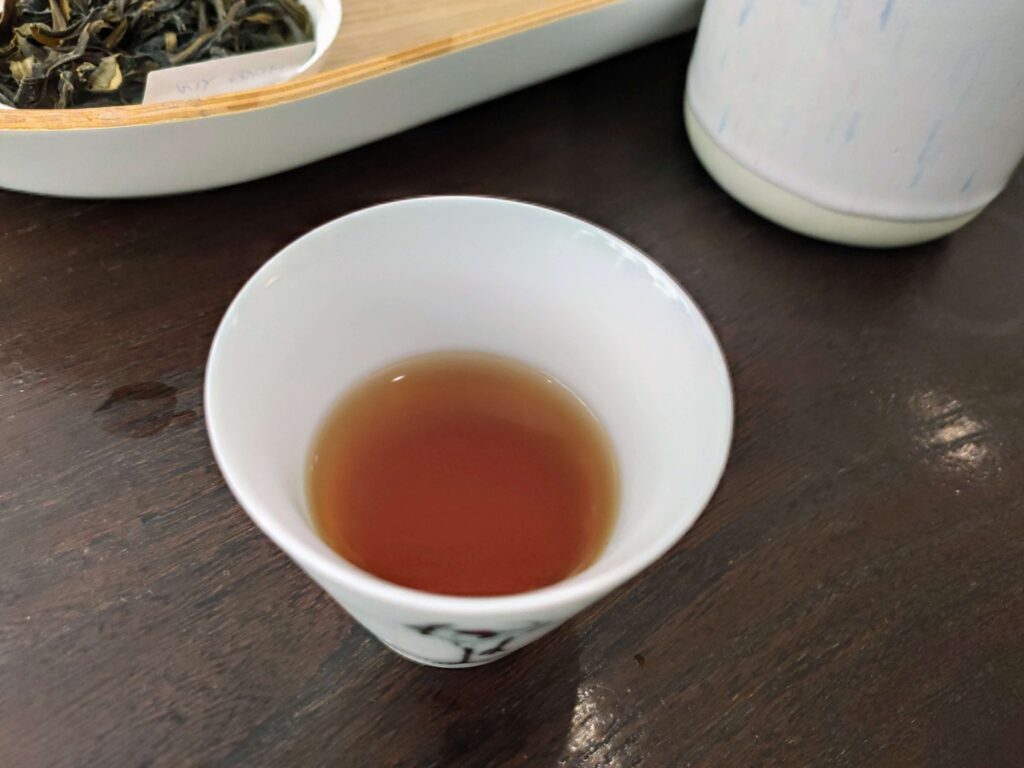
It evoked lots of memories around the table. From the Finnish love of liquorice, a smoky sauna to Peng’s memories of stealing liquorice root from her Grandma’s Chinese Medicine cabinet as a child. The flavour becomes sweeter on subsequent brews with hints of molasses, with the liquorice coming more to the fore. It finishes with a sweet silky mouthfeel and a very long aftertaste.
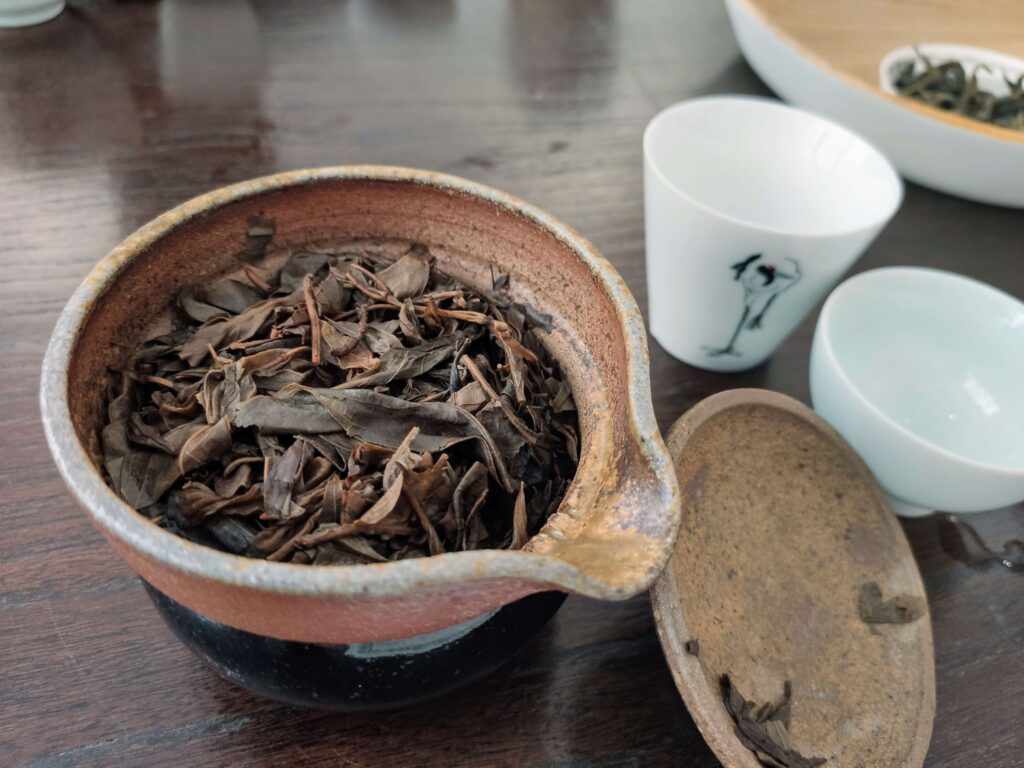
Local Wild Red Tea
As a comparison to Oolong, we tasted a local wild Red (or Black)* tea made with the same leaves as the Oolong. The difference in processing is that Red teas are fully oxidised and are not roasted. The tea has a sweet aroma and sweet molasses flavour typical of many Red teas, but overall it’s much lighter. It really doesn’t carry the same depth of flavour as the Oolongs, something that comes out during the roasting process.
*What we refer to as Black tea in Western countries is known as Red tea in China.
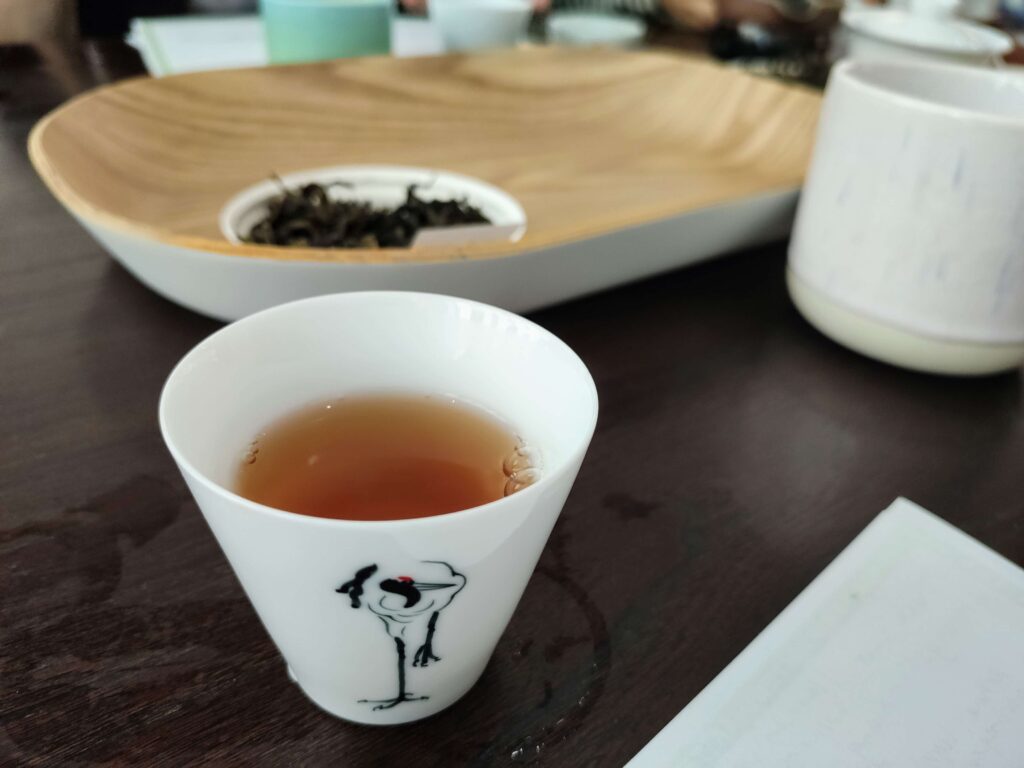
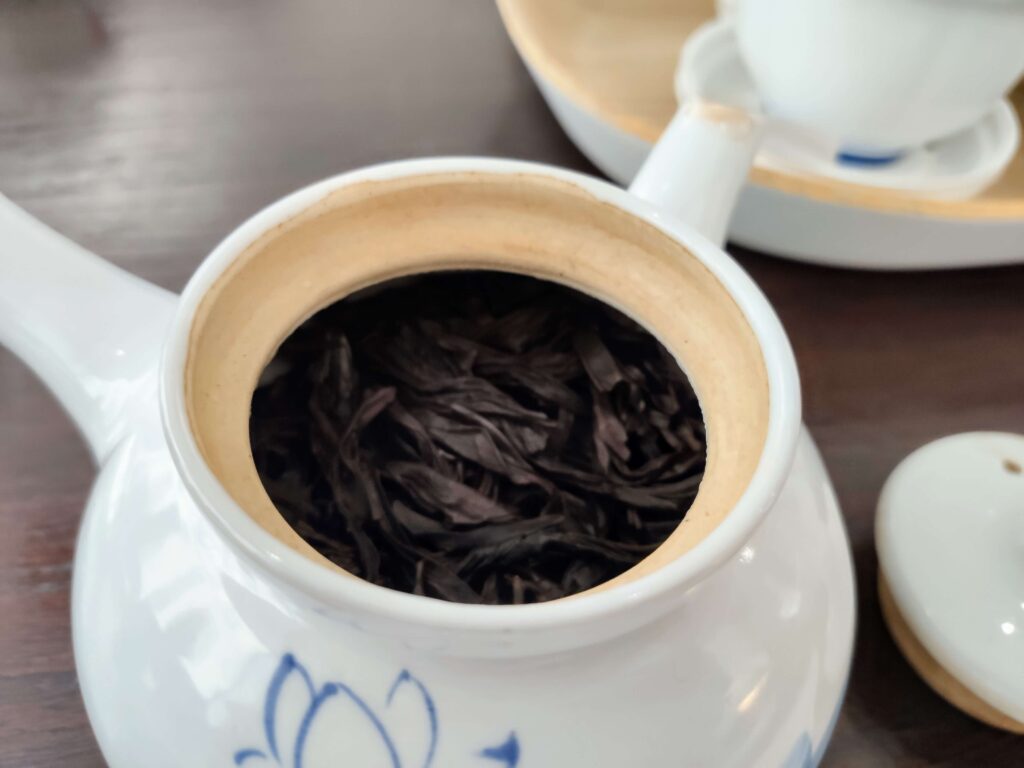
Hong Yin
Last but not least is our ancestral Phoenix Dan Cong. Hong Yin is made with leaves collected by the farmer from the wild forest, so is the closest to the original. It translates as ‘Red Carpet’, with the carpet relating to nature, like a carpet of leaves or moss.
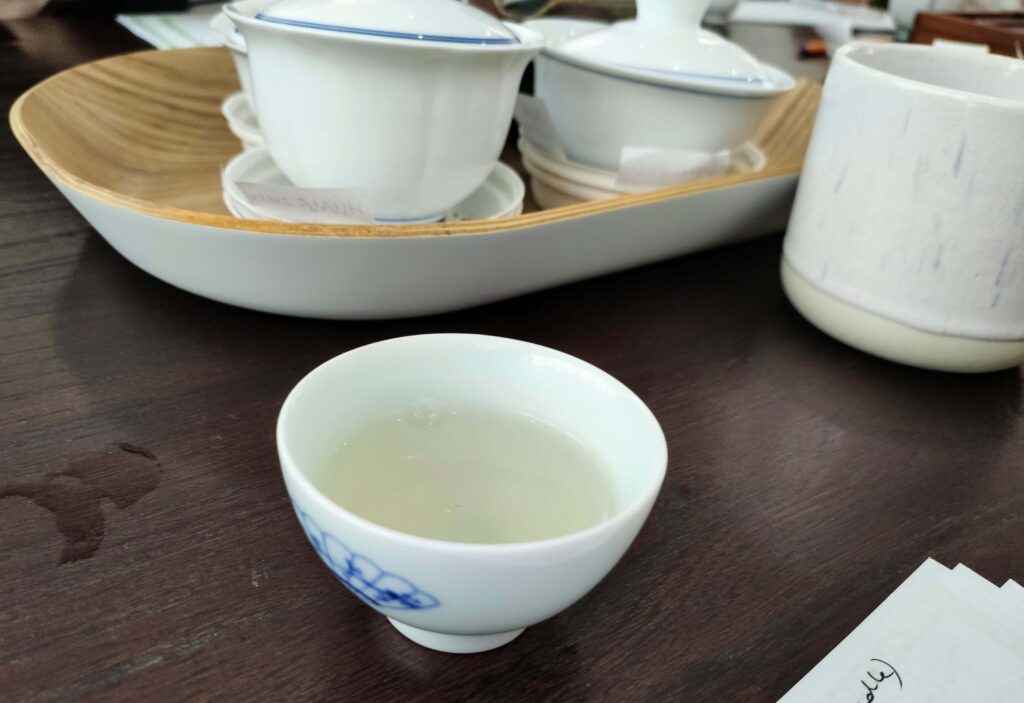
The dry leaves are big and rough looking. The wet leaves smell like the forest, earthy and damp with a natural sweetness. Though it’s the Granddaddy of them all, to be honest it was the least interesting. Lightly roasted, the flavour is very light and soft with quite a short aftertaste.
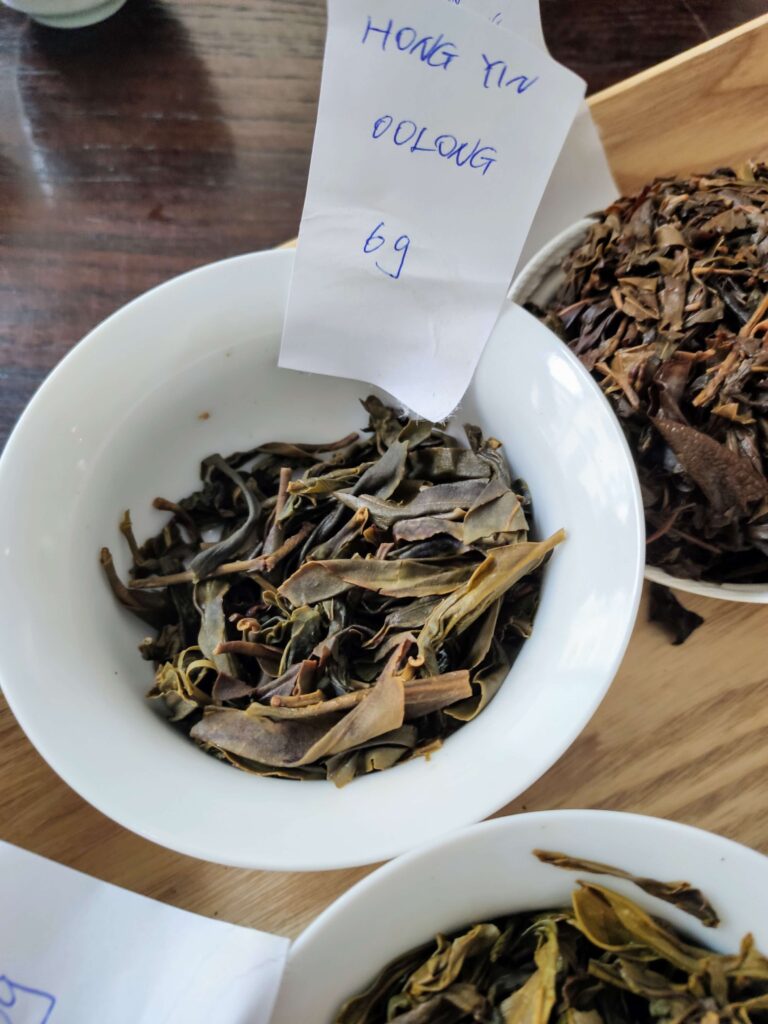
A Note on Brewing
How to brew the perfect Oolong tea? I’ve always gone for the standard 90-95C brewing temperature for Oolongs. However, Peng is in the ‘highest temperature possible’ camp, and brewed them all at 100C. She explains that this brings out more of the aroma and flavour into the liquor. The exception to the rule is Oriental Beauty from Taiwan which should be brewed at 85C.
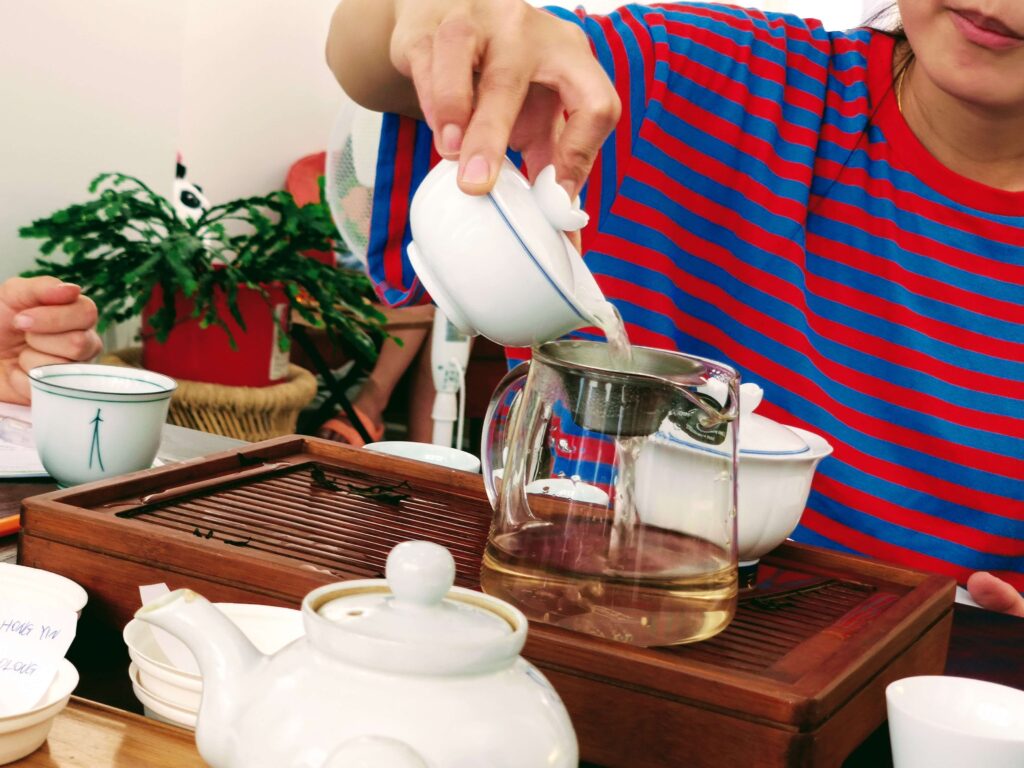
Oolongs are especially suited for multiple brewings using the gong fu style, as each brew brings different aromas and flavours. Peng used 6g of tea in a gaiwan to brew the teas. After an initial wash to waken the tea leaves, she steeped them for 10 seconds on the first brew, with an additional 10 seconds added for each subsequent brew. Except for Shan Gan Aged Oolong where the steeping time doesn’t matter so much. The ageing process makes the tea more smooth and mellow, and less prone to bitterness so the steeping time doesn’t affect it so much.
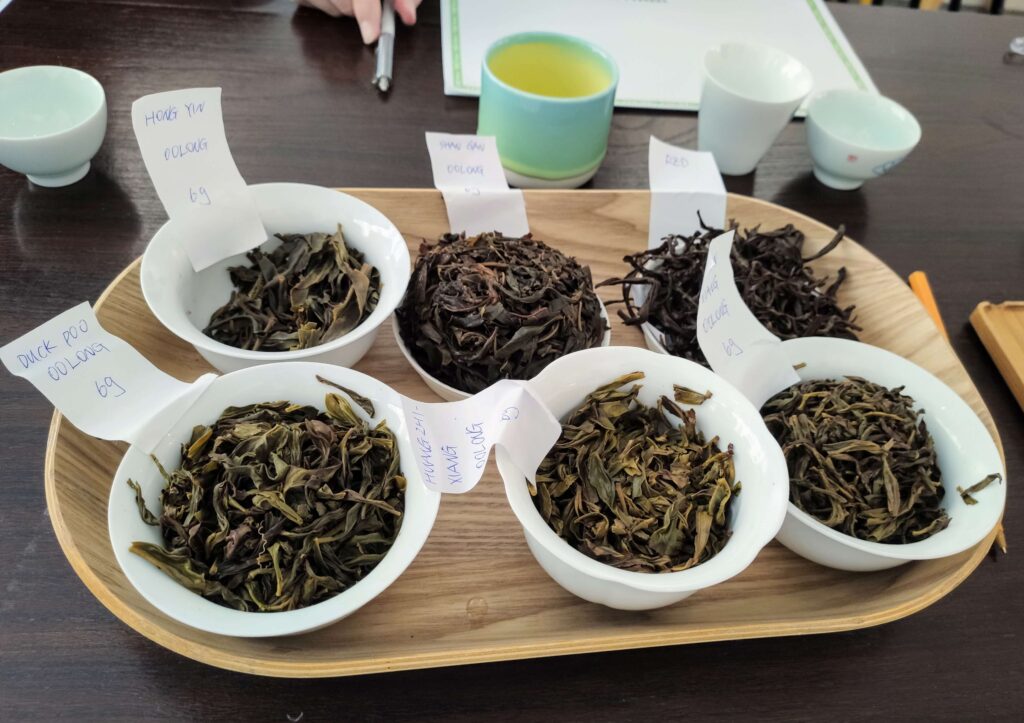
Out of the 5 Phoenix Dan Congs we tasted, I want to get to know Huang Zhi Xiang and Shan Gan Aged Oolong a little better! Two very different tea experiences. The former will be great as a gentle and floral all day sipping tea and the latter to shake up the ol’ tastebuds.
If you’re based in Helsinki, Part 2 & 3 of TeeMaa’s Oolong Deep Dive series are coming up on 9th & 16th August. If not, then stay tuned for my next blog post on Workshop #2: Taiwanese Oolongs.



